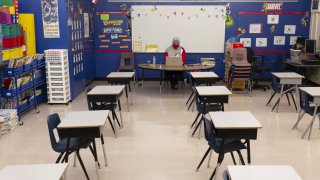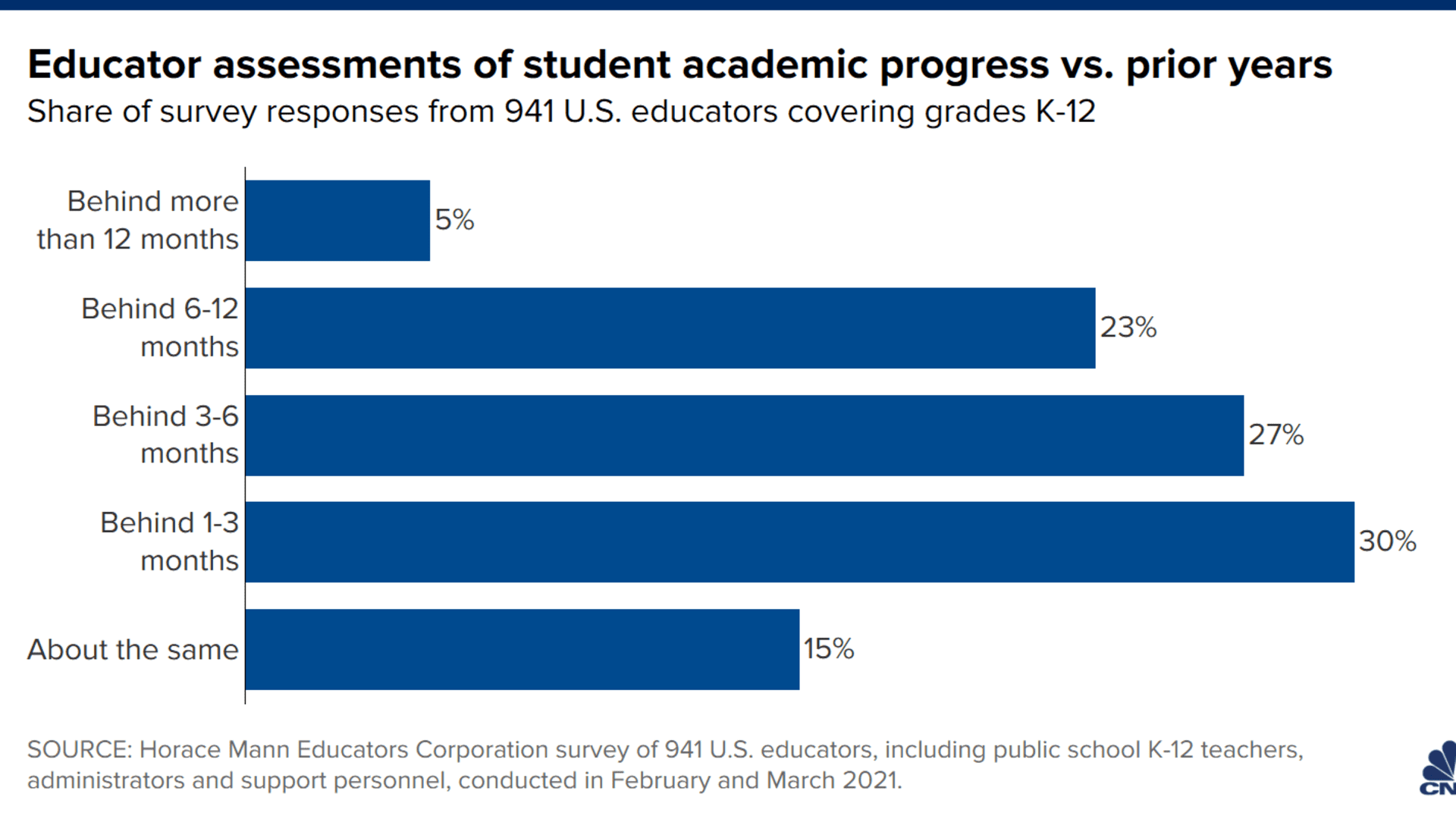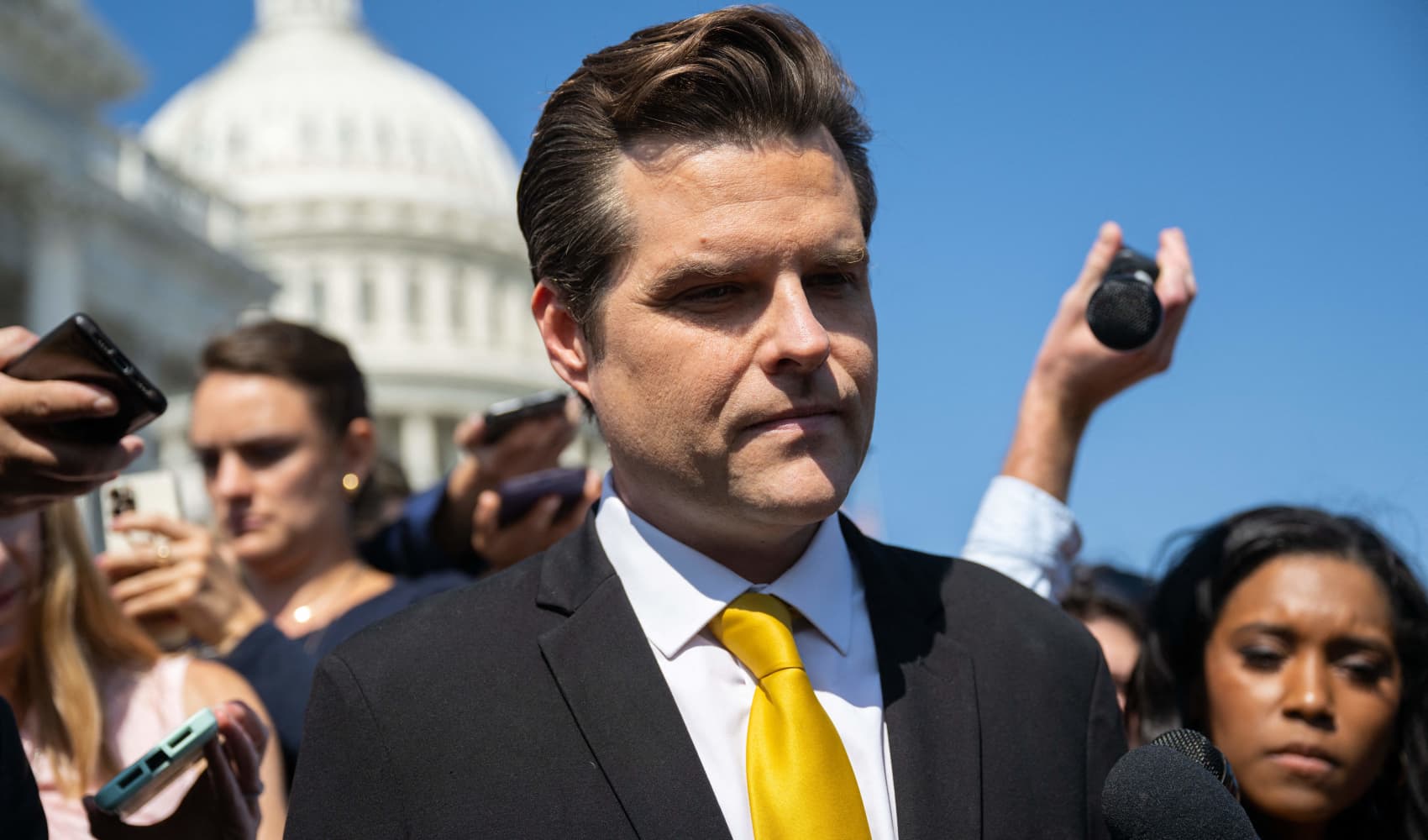
- More than half of public school K-12 teachers said the pandemic resulted in a “significant” learning loss for students, both academically and in their social-emotional progress, according to a report.
- Other research also shows distance learning has caused a significant setback in achievement, particularly among Black and Hispanic students and students with disabilities.

WATCH ANYTIME FOR FREE
Stream NBC10 Boston news for free, 24/7, wherever you are. |
Nothing beats being in a classroom.
After a year of school closings and distance learning amid the coronavirus crisis, more than half of public school K-12 teachers said the pandemic resulted in a "significant" learning loss for students, both academically and from a social-emotional standpoint, according to a report by Horace Mann.
Get updates on what's happening in Boston to your inbox. Sign up for our News Headlines newsletter.
Data from the Centers for Disease Control and Prevention also suggested that virtual learning "might present more risks than in-person instruction related to child and parental mental and emotional health and some health-supporting behaviors."
"The pandemic has taken a toll on our students from an educational perspective, but there are a lot of other impacts happening," said Kelly Ruwe, an education advocate for Horace Mann, as well as a former kindergarten teacher and a mother of three.
More from Personal Finance:
Teachers are next in line for the Covid vaccine
Many schools struggle to reopen for in-person learning
Biden rolls out his plan to reopen schools
Money Report
"We have to take a step back and look at the whole child."
Nearly all — more than 97% — of educators reported seeing some learning loss in their students over the past year when compared with children in previous years, and a majority, or 57%, estimated their students are behind by more than three months in their social-emotional progress, Horace Mann found.
Some teachers suggested these setbacks could be addressed by adding on summer sessions or bringing teacher's aides into the classroom for one-on-one or small group instruction. Still, nearly one-third expected more students will need to repeat a grade.

The Voice of the Educator Study polled nearly 1,000 educators, including public school K-12 teachers, administrators and support staff in February and March 2021.
A separate study by McKinsey & Company found similar results worldwide. The majority of teachers from eight different countries said that remote learning is a poor substitute for being back in the classroom.
The U.S. and Japan gave distance learning the harshest scores overall, with a majority of teachers ranking the effectiveness only slightly better than skipping school completely.
Economic status mattered, too. Educators in schools in areas with higher poverty found virtual classes to be especially ineffective, heightening concerns that Covid-19 exacerbated educational inequalities.

Other research also shows distance learning has caused a significant setback in achievement, particularly among Black and Hispanic students, as well as students with disabilities.
According to a survey of more than 1,100 public school teachers by education nonprofit DonorsChoose, students in low-income communities and minority students have been disproportionately impacted by the pandemic.
Teachers report that these students are more likely to be learning remotely currently, and more likely to not have had their school building open all year.
When asked what the biggest obstacle to return to a "normal" education environment was, nearly half cited a widening gap between academically struggling and high-performing students.
On the upside, President Joe Biden has made reopening the nation's schools for in-person learning a top priority of his first 100 days in office. As part of that effort, teachers are now eligible for the Covid vaccines in all 50 states.
"The good news for students is the 2021-2022 school year has strong potential to look more like a pre-pandemic learning environment," Ruwe said.
The CDC also updated its guidance on how schools can safely reopen for in-person learning despite the spread of the virus.
The CDC now says most students can sit 3 feet apart, instead of 6 feet, as long as they are wearing masks, regardless of whether community transmission is low, moderate or substantial.
In a recent update to an earlier report on Covid′s impact on education, McKinsey & Company outlines several other ways students can make up for lost time once the pandemic ends.
The recommendations include 50 hours of targeted instruction over two weeks or high-intensity tutoring, which is 50 minutes of daily tutoring for a year — but both come at a steep financial cost.






